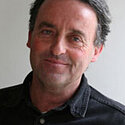Some people identify as environmentalists, some as health professionals, some as scientists, some as people affected by diseases thought to be at least partly related to environmental factors such as industrial or other chemicals, and some who are any combination of these identities. Twenty years ago, some of us at Commonweal decided that all these diverse people might benefit from talking with each other more—and by working for a healthier future as well.
Commonweal founder Michael Lerner had already thought much about environmental health, as had a small group of others with great relevant expertise in our circles. Michael wrote a thoughtful essay titled “The Coming Age of Environmental Health” and we all began talking about how we might work together, with the aim of closer communication among environmental scientists, advocates, health professionals, patient groups, and more. I recall a long beach walk where Michael and I talked about how we might turn such ideas into action, pending some first funding. I agreed to pitch in, bringing the organized medical community in as a co-sponsor. And soon, some funds in hand, we were off and running.
The inaugural meeting that led to the creation of the Collaborative on Health and the Environment (CHE) was held at the San Francisco Medical Society in March 2002, co-sponsored with Commonweal and featuring an invited group of researchers, health professionals, representatives of major health-affected organizations, and environmental health and justice advocates. The group agreed that a new forum to increase connections and action had great potential. Then a smaller group met at Commonweal to flesh out what this potential large network might do. We worked through 16 versions of a CHE “partner statement” for people to sign onto, summarizing the concerns and goals to guide our work. And then we launched CHE at a large conference held at UCSF medical center co-chaired by the late great former UCSF Chancellor and CHE advisor Philip R. Lee, MD.
CHE was focused on two fundamental questions: 1) Given the increasing prevalence of chronic diseases and disabilities, what do we know from the science about the role of environmental exposures? and 2) How can we make the emerging environmental health science more accessible to researchers, health professionals, health-affected groups, and the general public in order to press for upstream prevention of these major health concerns?
It seemed to us that the more people who are experiencing health problems understood the environmental exposures and diseases, from conception to senior ages, then the groundswell of demand for cleaner air and water, healthier foods, safer products, and healthier homes, schools and workplaces would be immeasurably strengthened. In turn, not only would we have a healthier planet, but we would be healthier, too.
Many seemed to agree. At our first open meetings, most attendees eagerly signed on to our consensus statement. Once our website was up and we began presenting the concise webinars with leading researchers and other figures that have remained our organic bread and butter, that spiraled into the thousands. CHE became a kind of open university of “science and civility”—which soon became our guiding motto.
Promoting Prevention
CHE has fostered numerous interdisciplinary collaborations that have advanced disease prevention and health promotion, including these:
- Establishing, with a major international conference, the first major academic program in the United States on reproductive health and the environment (housed at the University of California, San Francisco – UCSF)
- Creating an award-winning eBook on multiple contributors to specific health concerns with continuing education credits for health professionals available from the Centers for Disease Control and Prevention
- Engaging the President’s Cancer Panel in the first major review of the scientific literature on links between toxic exposures and cancer
- Educating national learning and developmental disabilities organizations about the emerging science and empowering them to become influential voices in reducing exposures to toxic chemicals through chemical policy reform initiatives and market campaigns
- Producing more than 60 publications, for researchers, health professionals, and lay constituencies to better understand new research and how it can be applied in “real world” ways
- Developing scientific consensus statements that have advanced research on environmental links to a wide range of diseases and disabilities
- Founding Because Health, a consumer-oriented resource for anyone wishing to live an informed, healthier life in an often toxic environment (now part of the Center for Environmental Health)
- And, from the beginning, presenting hundreds of open educational calls and webinars on the full range of environmental health science, policies, and other developments.
By coincidence of timing, we now embark on a new era for CHE, with an excellent new director, Kristin Schafer, who CHE partners and Commonweal supporters will soon be hearing more about and from.
CHE has always been primarily about people, but the list is just too long to name all those who have contributed—through the years our lean organization has had well over a dozen great staff; even more core expert advisors, scores of leading scientists and others lending their brains and voices to our forums; some generous funders who’ve made it all possible; and again, thousands of CHE partners who have come along with us, actively, or just to learn with us.
Legendary biologist Rachel Carson’s landmark 1962 book Silent Spring focused on the impact of pesticides and other chemicals on birds and other species, helping launch a modernization of environmentalism. But humans are hardly immune to such impacts as well. When CHE began, we figured giving the new effort a five-year “trial incubation” period might be a smart approach to start, and that if it thrived, it might be spun off of Commonweal to become its own independent entity. Two decades later, CHE has become and remained a signature Commonweal program, with impact far, wide, and deep. One could say, for better and worse, it is needed even more than two decades ago. As always, we thank all who have contributed to CHEs vision and work in any manner, and invite anybody interested to join in for healthier humans on a healthier planet.
This article was initially published on the Commonweal website.


